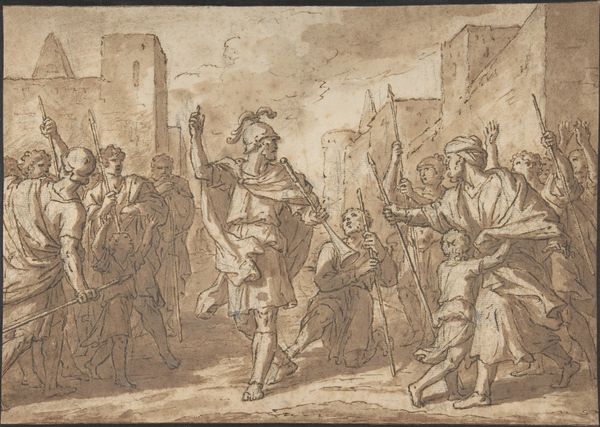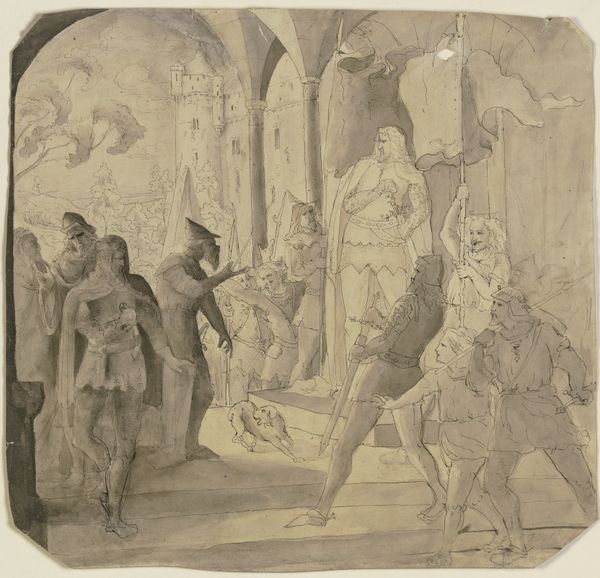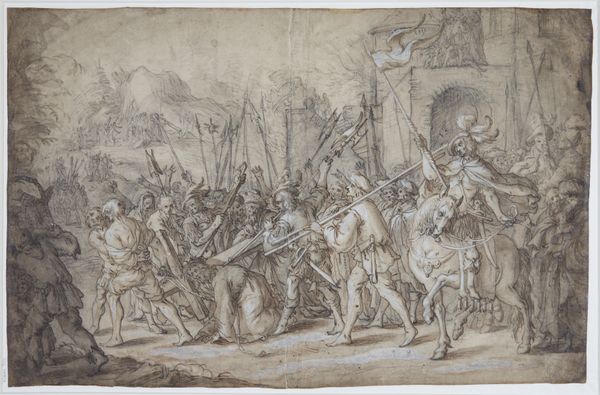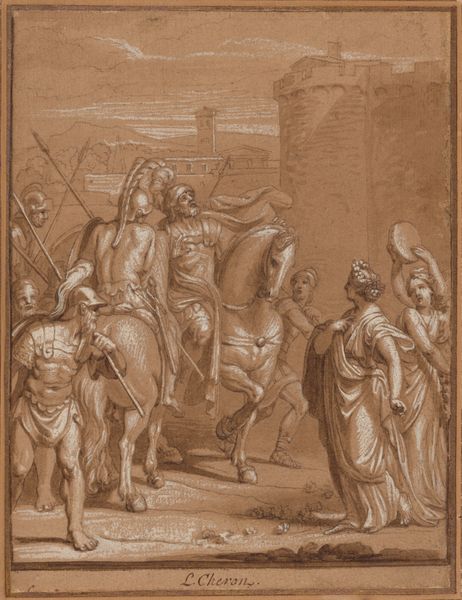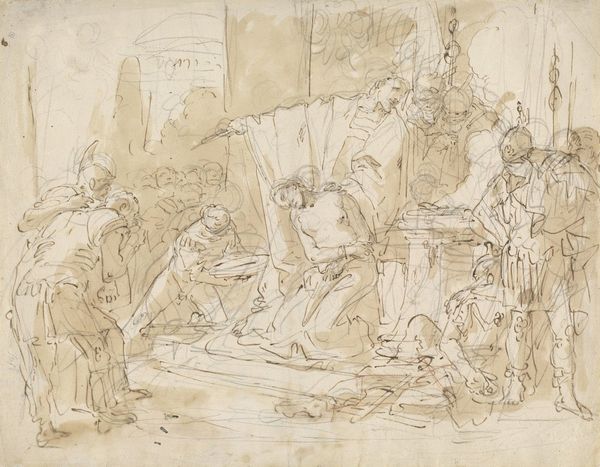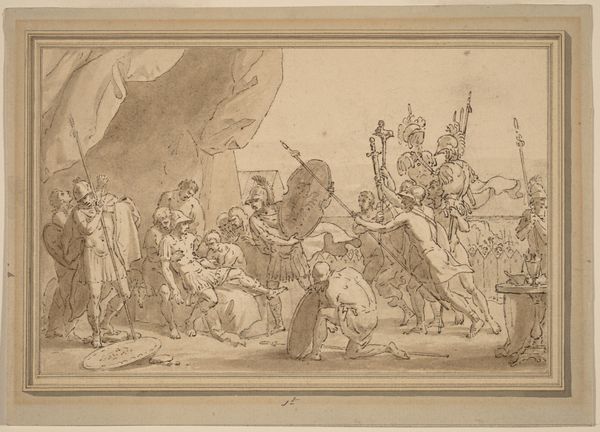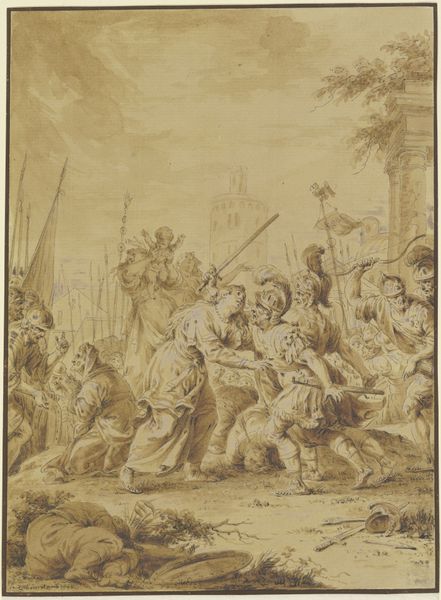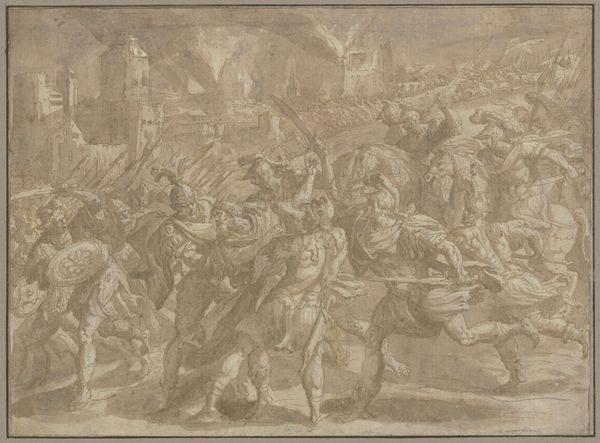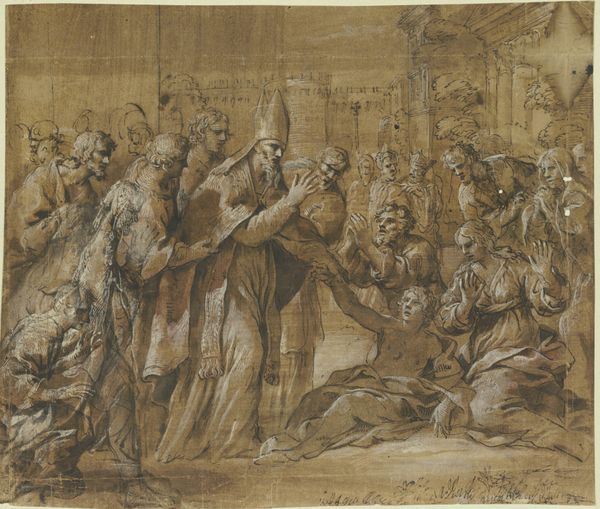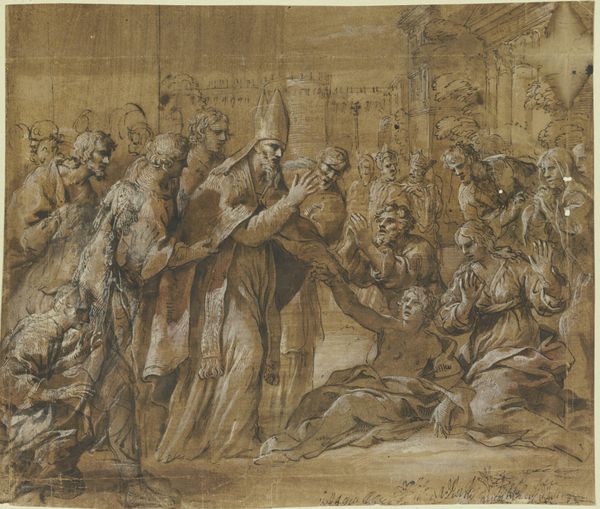
drawing, print, paper, ink, chalk, charcoal
#
drawing
#
narrative-art
# print
#
charcoal drawing
#
figuration
#
paper
#
ink
#
chalk
#
charcoal
#
history-painting
Dimensions: 311 × 384 mm
Copyright: Public Domain
Curator: This drawing, "Christ Falling Under the Cross," is attributed to Caspar Fraisinger and captures a pivotal moment from the Passion. The work on paper uses ink, chalk and charcoal. It’s currently held in the collection of The Art Institute of Chicago. What is your initial reaction to this composition? Editor: Visually, I'm struck by the dynamic yet oppressive atmosphere. The swirling lines, the chaotic layering of figures...it speaks to suffering and brutality, a claustrophobic nightmare rendered in monochrome. Curator: Indeed. Fraisinger employs stark contrasts to emphasize the drama. Notice how Christ, collapsed under the weight, is placed centrally but surrounded by figures rendered in great detail; the lines convey tension, directing our eye across the tableau of Roman soldiers and the gathering crowd. Editor: And that crowd suggests something important, the wider societal and political structures complicit in this moment. Each character, however quickly sketched, represents a viewpoint, from the active oppressors to the silent observers. One cannot separate this drawing from the history of religious persecution. How has its reception evolved over time? Curator: I understand that its power and directness transcends the purely religious, engaging more universally with themes of injustice, struggle, and, ultimately, martyrdom. We observe certain patterns: linear precision is selectively introduced and seemingly abandoned; a controlled technique implies a narrative slipping out of control. Editor: Yes, the lack of rigid perfection in style seems critical here. Consider, the blurring and layering become visual metaphors for the erosion of justice and the blurring of individual moral responsibility within collective violence. Curator: Moreover, the architectural background should be considered within the visual weight this composition manifests. See how it towers behind Christ? Editor: Exactly, that subtle depth that encloses and smothers what little agency Christ and his allies possess in that key moment. By drawing our attention into those finer strokes of perspective Fraisinger exposes his historical era within it too, to the building of religious institutions on violence. Curator: Precisely. His choice of such a raw medium underlines this feeling, the lack of varnish to provide historical transparency here for modern eyes. Thank you for sharing your observations with me. Editor: Likewise. This was a stark reminder of how formal elements can amplify an artwork’s resonance across the ages.
Comments
No comments
Be the first to comment and join the conversation on the ultimate creative platform.
